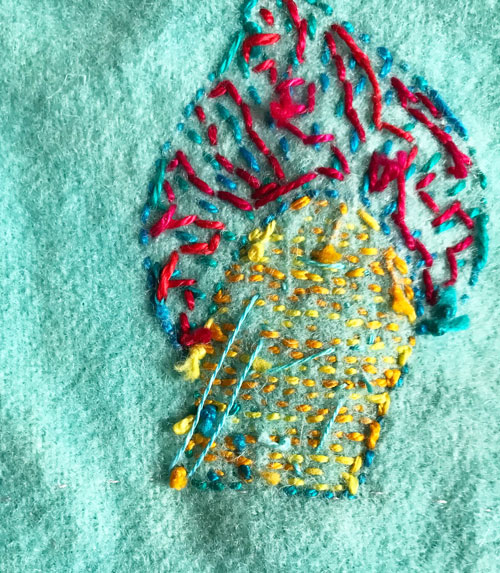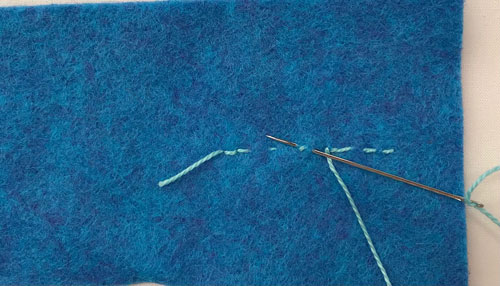Wherein the FrankenStitch is Revealed

A single Stella lamp casts a bright light on a pair of unmanicured hands in a shadowy room. As the embroiderer hunches over her bizarre creation, she hums a tune only she can hear.
Removing her earbuds, she grins and pops another cookie in her mouth. Like an alchemist, the stitcher gathers her discarded textiles to admire the glow of fabric and thread. It is taking shape this peculiar stitchery made from disparate parts.
Another Frankenstein embroidery is born!
Bwahahaha!
What drives our embroiderer to create such an unnatural embroidery? This FrankenStitch? What exactly is a FrankenStitch embroidery anyway?

Like The Frankenstein, FrankenStitch embroidery is created by combining partially finished embroidery parts like these and stitching them together.
As a result, you make artwork with a pleasant personality rather than an unruly neighbor with big boots.

So gather, if you will, to read the tale of this FrankenStitch.
For the next few days, I’ll tell you the story of this strange embroidery and how the embroiderer with the ragged cuticles laboriously wends the needle in and out and in and out cookie after cookie.
You’ll learn how a few innocent parts stitched together create this new embroidery design.
Bwahahaha!
To be continued….





